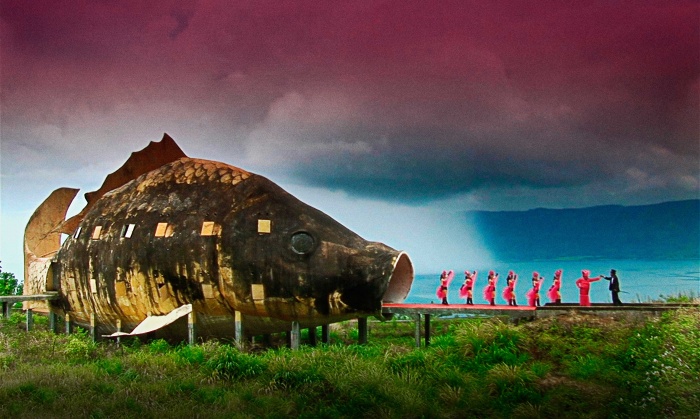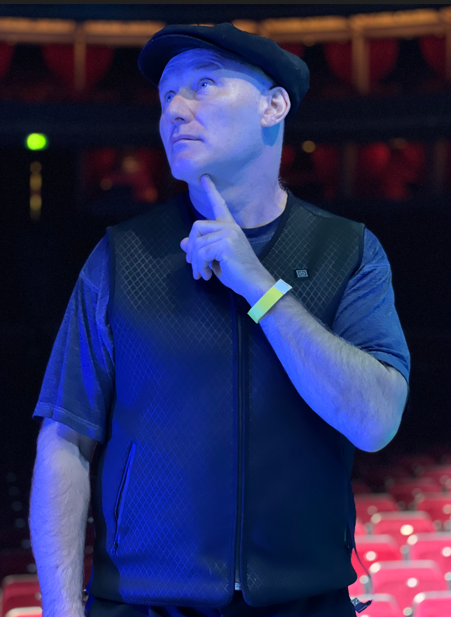The UK has gone from having only four documentary feature films released in cinemas in 2001 to 89 by 2013. With screenings of feature-length documentaries in mainstream cinemas rising in popularity, Sadia Pineda Hameed asks what attracts us to the dramas of reality.
Why is it so exciting, humorous and mildly tragic to watch Hands on a Hard Body, a documentary about an endurance competition where contestants keep a hand on a new truck for almost four days to win it? Why does Life Itself, about the life of film reviewer Roger Ebert, seem to bring us closer to him? Why is it that Jiro Dreams of Sushi, about one master chef’s passion and sincere dedication to his craft, inspires us in our own lives? Perhaps it is curiosity, concern, a need to be inspired by real human actions – or all of the above. These are all documentations of people, places and experiences we may never be privy to in our normal lives, and that is something that only naturally captivates us.
Documentary films are a purer appeal to emotion than fictional film. Viewers don’t feel as though their feelings are being manipulated in the traditional sense as a documentation of real life is as close to the truth as possible in an industry of story-telling. Voted Sight and Sound’s greatest documentary of all time, Dziga Vertov’s Man With a Movie Camera can help us understand the initial interest in films documenting some aspect of reality. ┬áThe 1929 film is a montage of life in the Soviet state during the interwar period and remains one of the most experimental examples of cinema today. In a similar sense, what makes a documentary film stand out amongst the everyday, disposable television documentary about drywall or types of moss is an emotionally gripping method of filmmaking. Some films take an ethnographic approach, such as the 1975 classic Grey Gardens, The Dhamma Brothers and The Wolfpack, looking into microcosmic worlds unknown to us. Others examine larger scale subjects such as the visually captivating Samsara and San Soleil, providing us with almost a zeitgeist of the planet as we may or may not know it. No matter the subject, documentaries seem to be increasingly more appropriate for mainstream viewing on the silver screen because the genre is designed for an excitement of emotions enough to evoke the disbelief that what we are watching is reality.
The word ‘documentary’ may not conjure much excitement to some, but those people haven’t watched The Thin Blue Line. Errol Morris’ 1988 film tells of Randal Dale Adams, a man convicted and sentenced to life for a murder he didn’t commit. An interest in documentaries depicting injustice can be explained if the popularity of documentary series Making a Murderer is examined. Much like The Thin Blue Line did at the time for Adams’ case, the Netflix series put viewers into the position of a detective, amassed outrage about the corrupt justice system and even resulted in petitions for retrials. In recent years, documentaries with such important implications have spiked in popularity, with screenings in mainstream cinemas of 2012’s The Act of Killing, 2013’s Blackfish and 2014’s Virunga. In particular, Joshua Oppenheimer’s The Act of Killing saw both a renewed worldwide attention about the Indonesian killings of 1965ÔÇô66, and brought about an extraordinary physical display of guilt from one of the death squad killers featured in the film. This expository nature means viewers can get their thrills, the emotional turbulence and sense of injustice that fictional films can simulate; but with documentary, these feelings linger along with the knowledge that it is reality.
Even so, some producers find true events easier to swallow when presented in fictional films. Recently, the 2005 documentary Our Brand Is Crisis was remade into the underwhelming 2015 Sandra Bullock film of the same name – presumably because the screenwriters thought the real life crisis wasn’t thrilling enough. However, since the late 2000’s, documentary filmmakers have been adopting conventions of narrative cinema as part of the norm, giving it a familiar story-telling structure and visual ┬áintrigue – without sacrificing the informative aspect of the genre. Even if the film isn’t based on a sort of journey, there is always a turn; a poignant moment in place of the climax, such as in The Artist is Present. 2013’s McCullin, about the eponymous war photographer and his reflections on what morally haunts him, was billed as ‘made-for-cinema’. It is rightly described as such, with directors Jacqui and David Morris creating a stunning film with a thoughtful and meditative tone – much like other recent documentaries such as Asif Kapadia’s Senna and the more recent Amy, which had the biggest ever opening weekend in the box office for a British documentary in the UK. All three films already have their narrative, and it was up to the filmmakers to tell them in ways more interesting than fictionalisation.
Fictionalised movies, even if based on a true story, seem to have this safety glass between the viewers and what is being shown on screen. We can’t ever wholly invest in something remotely fictional as we never feel they are completely truthful. And strangely enough, the shock factor is harder to attain in the momentary viewing experience of simple documentary series as we’re now so accustomed to reality television. It seems the combination of cinematic nuance and reality is what it now takes to touch us, outrage us or make us want to create change.



